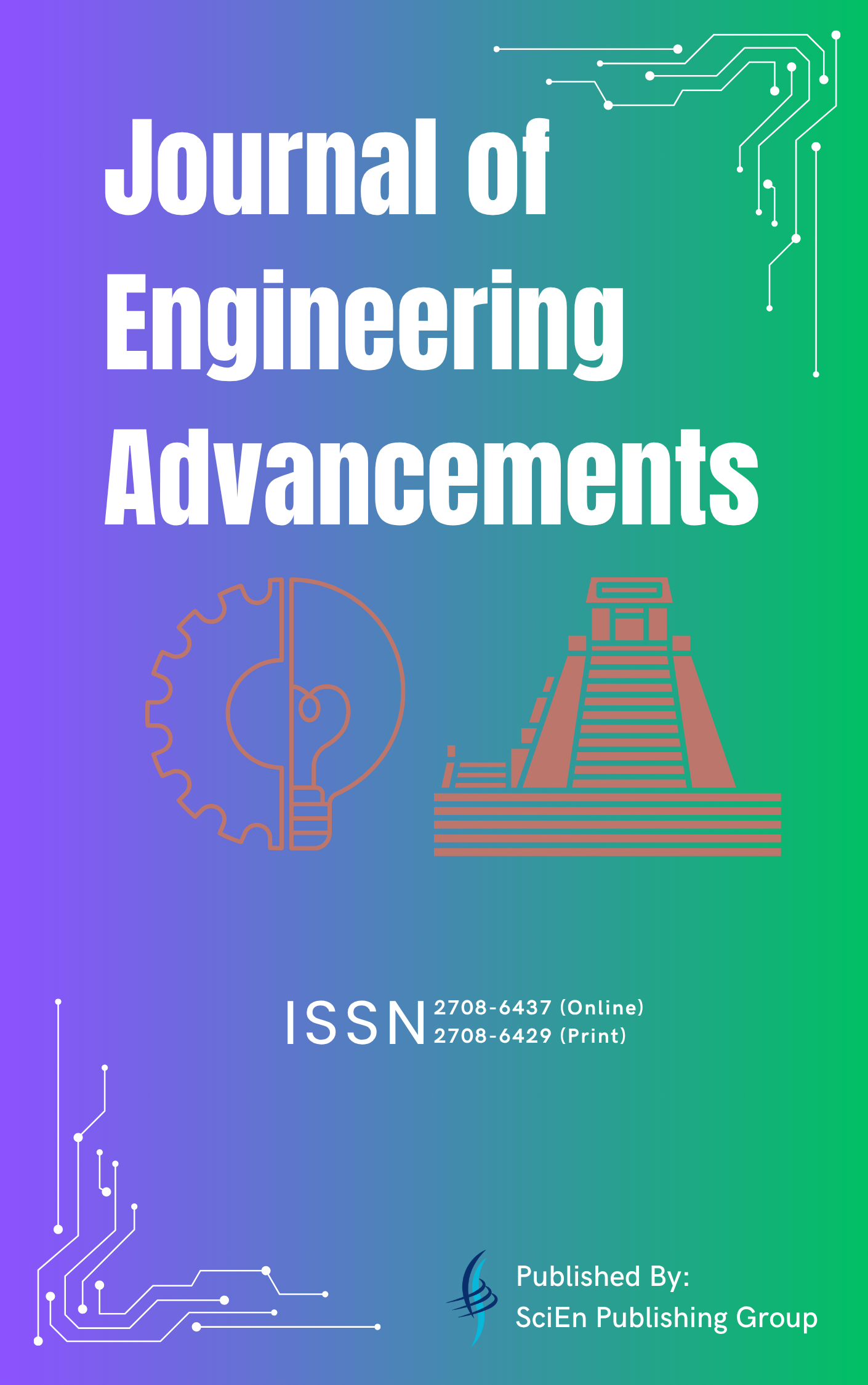Effect of Exhaust Gas Recirculation on Combustion and Emission Performance of a Dual Fuel CI Engine – A Numerical Investigation
DOI:
https://doi.org/10.38032/scse.2025.1.3Keywords:
Exhaust Gas Recirculation, Diesel-Gasoline Dual Fuel CI Engine, Combustion and Emission PerformanceAbstract
Due to the depletion of Diesel fuel and higher cost, it is desirable to find alternative fuel with lower cost and better combustion and emission characteristics. As, gaseous fuel is cheaper than liquid fuel, one of the effective solutions to obtain better engine performance is replacing a portion of liquid fuel by gaseous fuel in CI engine which is called dual fuel CI engine. In dual fuel engine, main gaseous fuel is provided through intake manifold by premixing with air and the mixture is ignited by injecting liquid pilot fuel at near the end of the compression stroke. The process is cost effective as well as the engine obtain higher thermal efficiency and lower soot, CO, UHC emission. But NOx emission is increased in CI engine with dual fuel mode which adversely affected the human health and pollute the environment. By applying Exhaust Gas Recirculation (EGR), NOx emission and knocking of the engine can be reduced. In this numerical simulation, the effect of EGR on combustion and emission performance of dual fuel CI is investigated through ANSYS Forte 18.1. In this study, gasoline is considered as main gaseous fuel and diesel is considered as liquid pilot fuel. Effect of EGR on various engine parameters such as in-cylinder pressure, temperature, heat release rate, ignition delay, combustion duration, NOx, CO and UHC emission is investigated. It is seen that, in-cylinder peak pressure is reduced to 50.65% and in-cylinder maximum temperature is reduced to 60.19% for the addition of 40% EGR. NOx emission is reduced to 57.19% for the addition of 10% EGR, 21.32% for 20% EGR, 1.57% for 30% EGR and 0.014% for 40% EGR.
Downloads
Downloads
References
[1] G. A. Karim, "A review of combustion processes in the dual fuel engine-the gas diesel engine," Prog. Energy Combust. Sci., vol. 6, no. 3, pp. 277-285, 1980. DOI: https://doi.org/10.1016/0360-1285(80)90019-2
[2] E. Mattarelli, C. A. Rinaldini, and V. I. Golovitchev, "CFD-3D analysis of a light duty Dual Fuel (Diesel/Natural Gas) combustion engine," Energy Procedia, vol. 45, pp. 929-937, 2014. DOI: https://doi.org/10.1016/j.egypro.2014.01.098
[3] G. A. Karim, Dual-fuel diesel engines. CRC Press, 2015. DOI: https://doi.org/10.1201/b18163
[4] Y. Xu, H. Kang, J. Gong, S. Zhang, and X. Li, "A study on the combustion strategy of gasoline/diesel dual-fuel engine," Fuel, vol. 225, pp. 426-435, 2018. DOI: https://doi.org/10.1016/j.fuel.2018.03.166
[5] M. Ghazikhani, M. R. Kalateh, Y. K. Toroghi, and M. Dehnavi, "An experimental study on the effect of EGR and engine speed on CO and HC emissions of dual fuel HCCI engine," World Acad. Sci. Eng. Technol., vol. 52, p. 2009, 2009.
[6] G. H. Abd-Alla, "Using exhaust gas recirculation in internal combustion engines: a review," energy Convers. Manag., vol. 43, no. 8, pp. 1027-1042, 2002. DOI: https://doi.org/10.1016/S0196-8904(01)00091-7
[7] V. Pirouzpanah, R. K. Saray, A. Sohrabi, and A. Niaei, "Comparison of thermal and radical effects of EGR gases on combustion process in dual fuel engines at part loads," Energy Convers. Manag., vol. 48, no. 7, pp. 1909-1918, 2007. DOI: https://doi.org/10.1016/j.enconman.2007.01.031
[8] S. Verma, L. M. Das, S. C. Kaushik, and S. S. Bhatti, "The effects of compression ratio and EGR on the performance and emission characteristics of diesel-biogas dual fuel engine," Appl. Therm. Eng., vol. 150, pp. 1090-1103, 2019. DOI: https://doi.org/10.1016/j.applthermaleng.2019.01.080
[9] Y. Zhao, Y. Wang, D. Li, X. Lei, and S. Liu, "Combustion and emission characteristics of a DME (dimethyl ether)-diesel dual fuel premixed charge compression ignition engine with EGR (exhaust gas recirculation)," Energy, vol. 72, pp. 608-617, 2014. DOI: https://doi.org/10.1016/j.energy.2014.05.086
[10] E. Tomita, Y. Harada, N. Kawahara, and A. Sakane, "Effect of EGR on combustion and exhaust emissions in supercharged dual-fuel natural gas engine ignited with diesel fuel," SAE Tech. Pap., 2009. DOI: https://doi.org/10.4271/2009-01-1832
[11] G. Duraisamy, M. Rangasamy, and G. Nagarajan, "Effect of EGR and premixed mass percentage on cycle to cycle variation of methanol/diesel dual fuel RCCI combustion," SAE Technical Paper, 2019. DOI: https://doi.org/10.4271/2019-26-0090
[12] M. M. Abdelaal and A. H. Hegab, "Combustion and emission characteristics of a natural gas-fueled diesel engine with EGR," Energy Convers. Manag., vol. 64, pp. 301-312, 2012. DOI: https://doi.org/10.1016/j.enconman.2012.05.021
[13] M. T. Chaichan, "The impact of equivalence ratio on performance and emissions of a hydrogen-diesel dual fuel engine with cooled exhaust gas recirculation," Int. J. Sci. Eng. Res., vol. 6, no. 6, pp. 938-941, 2015.
[14] N. Saravanan, G. Nagarajan, K. M. Kalaiselvan, and C. Dhanasekaran, "An experimental investigation on hydrogen as a dual fuel for diesel engine system with exhaust gas recirculation technique," Renew. Energy, vol. 33, no. 3, pp. 422-427, 2008. DOI: https://doi.org/10.1016/j.renene.2007.03.015
[15] S. Nag, P. Sharma, A. Gupta, and A. Dhar, "Experimental study of engine performance and emissions for hydrogen diesel dual fuel engine with exhaust gas recirculation," Int. J. Hydrogen Energy, vol. 44, no. 23, pp. 12163-12175, 2019. DOI: https://doi.org/10.1016/j.ijhydene.2019.03.120
[16] J. B. Heywood, "Combustion engine fundamentals," 1a Edição. Estados Unidos, vol. 25, pp. 1117-1128, 1988.
Published
Conference Proceedings Volume
Section
License
Copyright (c) 2025 Md. Khairul Islam Rifat, Kazi Mostafijur Rahman, Md. Jamiun Noor Shadman, Zarin Sadia Saki (Author)

This work is licensed under a Creative Commons Attribution 4.0 International License.
All the articles published by this journal are licensed under a Creative Commons Attribution 4.0 International License

